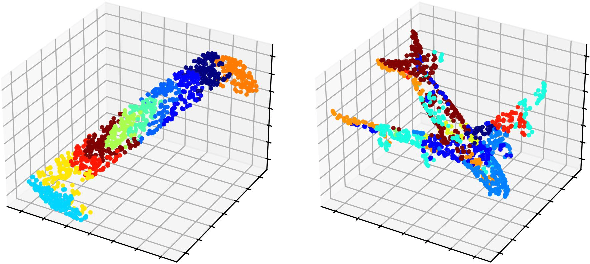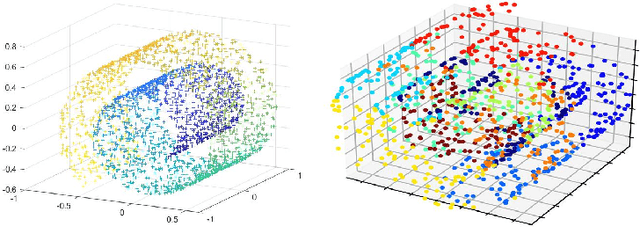Yumei She
From Images to Features: Unbiased Morphology Classification via Variational Auto-Encoders and Domain Adaptation
Mar 15, 2023Abstract:We present a novel approach for the dimensionality reduction of galaxy images by leveraging a combination of variational auto-encoders (VAE) and domain adaptation (DA). We demonstrate the effectiveness of this approach using a sample of low redshift galaxies with detailed morphological type labels from the Galaxy-Zoo DECaLS project. We show that 40-dimensional latent variables can effectively reproduce most morphological features in galaxy images. To further validate the effectiveness of our approach, we utilised a classical random forest (RF) classifier on the 40-dimensional latent variables to make detailed morphology feature classifications. This approach performs similarly to a direct neural network application on galaxy images. We further enhance our model by tuning the VAE network via DA using galaxies in the overlapping footprint of DECaLS and BASS+MzLS, enabling the unbiased application of our model to galaxy images in both surveys. We observed that noise suppression during DA led to even better morphological feature extraction and classification performance. Overall, this combination of VAE and DA can be applied to achieve image dimensionality reduction, defect image identification, and morphology classification in large optical surveys.
Unsupervised Capsule Networks of High-Dimension Point Clouds classification
Jun 15, 2022



Abstract:Three-dimensional point clouds learning is widely applied, but the point clouds are still unable to deal with classification and recognition tasks satisfactorily in the cases of irregular geometric structures and high-dimensional space. In 3D space, point clouds tend to have regular Euclidean structure because of their density. On the contrary, due to the high dimensionality, the spatial structure of high-dimensional space is more complex, and point clouds are mostly presented in non-European structure. Furthermore, among current 3D point clouds classification algorithms, Canonical Capsules algorithm based on Euclidean distance is difficult to decompose and identify non-Euclidean structures effectively. Thus, aiming at the point clouds classification task of non-Euclidean structure in 3D and high-dimensional space, this paper refers to the LLE algorithm based on geodesic distance for optimizing and proposes the unsupervised algorithm of high-dimensional point clouds capsule. In this paper, the geometric features of point clouds are considered in the extraction process, so as to transform the high-dimensional non-Euclidean structure into a lower-dimensional Euclidean structure with retaining spatial geometric features. To verify the feasibility of the unsupervised algorithm of high-dimensional point clouds capsule, experiments are conducted in Swiss Roll dataset, point clouds MNIST dataset and point clouds LFW dataset. The results show that (1) non-Euclidean structures can be can effectively identified by this model in Swiss Roll dataset; (2) a significant unsupervised learning effect is realized in point clouds MNIST dataset. In conclusion, the high-dimensional point clouds capsule unsupervised algorithm proposed in this paper is conducive to expand the application scenarios of current point clouds classification and recognition tasks.
 Add to Chrome
Add to Chrome Add to Firefox
Add to Firefox Add to Edge
Add to Edge